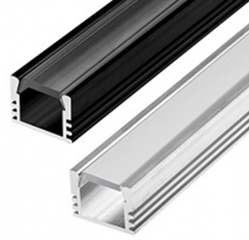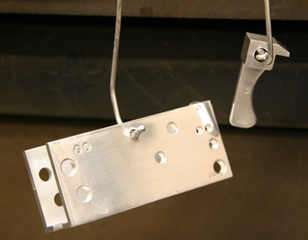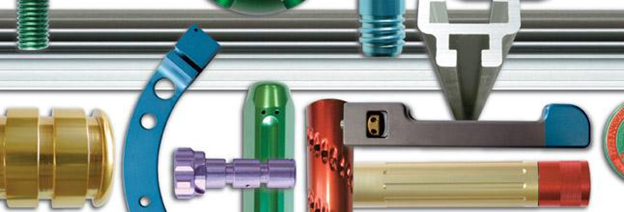Stripping
 The most common method of stripping used in production anodizing lines uses a bath of caustic soda (sodium hydroxide) and water. The concentration of caustic is generally 2-10% of 50% liquid caustic soda by volume in water. (Note: liquid caustic soda is sold in its concentrated form as 50% liquid caustic. In other words, the most concentrated solution you can readily purchase is a mixture of 50% water and 50% sodium oxide.) A temperature of 120-150F using plenty of air agitation is the usual procedure. The anodic coating will strip in a few seconds to a few minutes depending on the bath concentration and temperature, the anodize coating thickness and the degree of seal of the coating. For some well sealed, heavier coatings an acid soak, such as in the desmutting bath, of up to 30 minutes in duration prior to stripping will usually ensure that the coating comes off uniformly. There is more to the caustic bath chemistry than meets the eye. I will only mention in passing that the bath should include additives that contain various sequestering and chelating agents to help keep the dissolved aluminum in suspension. This is crucial because if the aluminum were to build up to the point where, without these additives, the bath could no longer hold it in suspension, a rock-hard hydrate of aluminum would form in the tank and render it inoperable.
The most common method of stripping used in production anodizing lines uses a bath of caustic soda (sodium hydroxide) and water. The concentration of caustic is generally 2-10% of 50% liquid caustic soda by volume in water. (Note: liquid caustic soda is sold in its concentrated form as 50% liquid caustic. In other words, the most concentrated solution you can readily purchase is a mixture of 50% water and 50% sodium oxide.) A temperature of 120-150F using plenty of air agitation is the usual procedure. The anodic coating will strip in a few seconds to a few minutes depending on the bath concentration and temperature, the anodize coating thickness and the degree of seal of the coating. For some well sealed, heavier coatings an acid soak, such as in the desmutting bath, of up to 30 minutes in duration prior to stripping will usually ensure that the coating comes off uniformly. There is more to the caustic bath chemistry than meets the eye. I will only mention in passing that the bath should include additives that contain various sequestering and chelating agents to help keep the dissolved aluminum in suspension. This is crucial because if the aluminum were to build up to the point where, without these additives, the bath could no longer hold it in suspension, a rock-hard hydrate of aluminum would form in the tank and render it inoperable.
 Another method of stripping the anodic coating uses various combinations of sulfuric acid and chromic acid at about 130-140F. This chemistry will readily remove the anodic coating but will not remove aluminum in the process, as caustic soda does. This was a popular stripper and desmutter in anodizing lines until about 1970 when environmental concerns about chromates began to take hold. The common chemistry for this bath is 175-g/liter chromic acid plus 35-g/liter sulfuric acid in water.
Another method of stripping the anodic coating uses various combinations of sulfuric acid and chromic acid at about 130-140F. This chemistry will readily remove the anodic coating but will not remove aluminum in the process, as caustic soda does. This was a popular stripper and desmutter in anodizing lines until about 1970 when environmental concerns about chromates began to take hold. The common chemistry for this bath is 175-g/liter chromic acid plus 35-g/liter sulfuric acid in water.
Another stripping solution that removes only the oxide coating can be found as part of ASTM B 680-80(1989), the Acid Dissolution Test. This method uses 20 g of chromic acid anhydride and 35 ml of orthophosphoric acid (85% mass) in distilled or deionized water to make one liter of solution. This procedure is only used in the laboratory to measure both coating weight and to assess the quality of seal.

